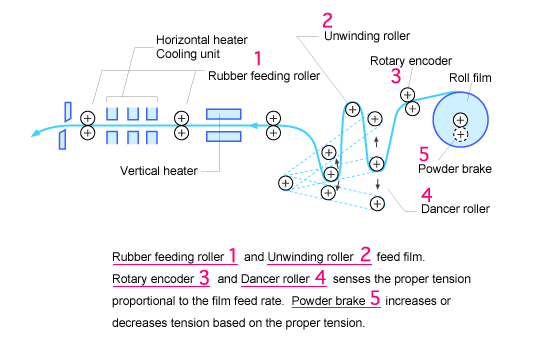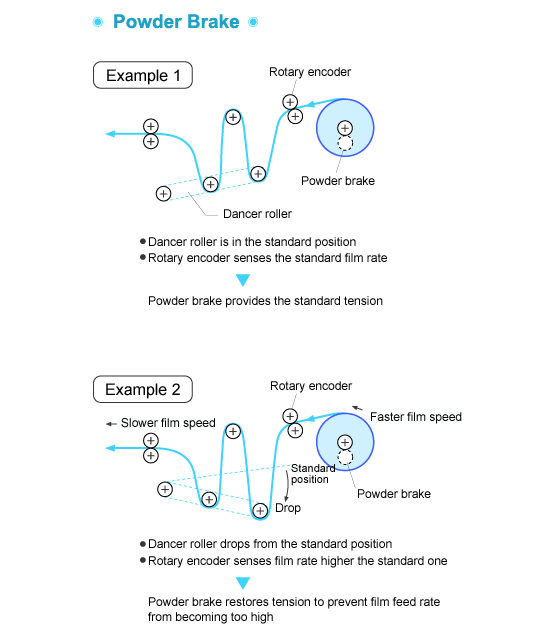- Film feed control section
-
The Powder Brake mechanism simplifies the troublesome adjustment of powder brake.
Overview and Feature
In pouch making machinery, generally, plastic film which is pouch material flows from roll film through unwinding rollers. A few rubber feeding rollers control the flow rate so that it can meet the conditions of pouch making (see the Figure).

Some models must transfer soft film over 10 m at high speed. The problem is then providing the constant tension to the film without pulling the film excessively (without overbraking) to transfer the film stably at high speed. Totani's pouch making machine is equipped with a Powder Brake which detects the rate and position of film to control tension.
This Powder Brake, which is connected with unwind shaft of the large roll of film though a gear, increases or decreases the rotational rate of the shaft by electromagnetic power to keep the tension of fed film at the specified value. In Totani's pouch making machine, the actual film unwinding rate is detected by a Rotary encoder and the position of the Dancer roller is detected with a potentiometer.
The film rate is detected by a Rotary encoder, and a potentiometer detects the position of the Dancer roller moving like a pendulum relative to the reference point. The signal from the potentiometer controls the Powder Brake. When the film rate is increased, the brake is applied a little. When the position of Dancer Roller is lower than the reference point, brake is strengthened a little. Thus, proper tension is given to film (see the Figure).

In general, powder brakes must be often adjusted in the operation of the machine. However, Totani's Powder Brake need not be adjusted from start to finish once tension is defined.
* The information on this site is subject to change without notice.
Why Totani?

